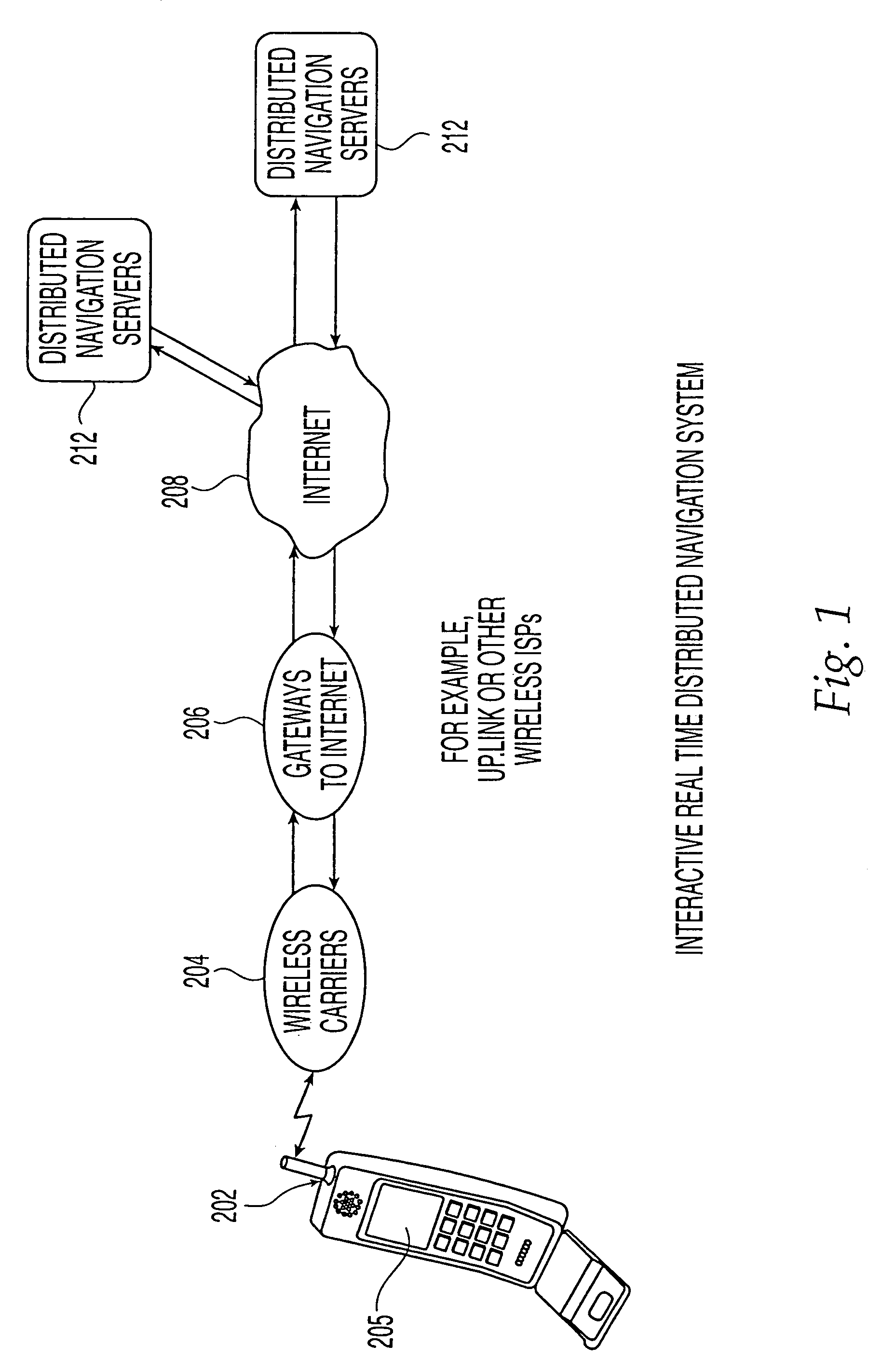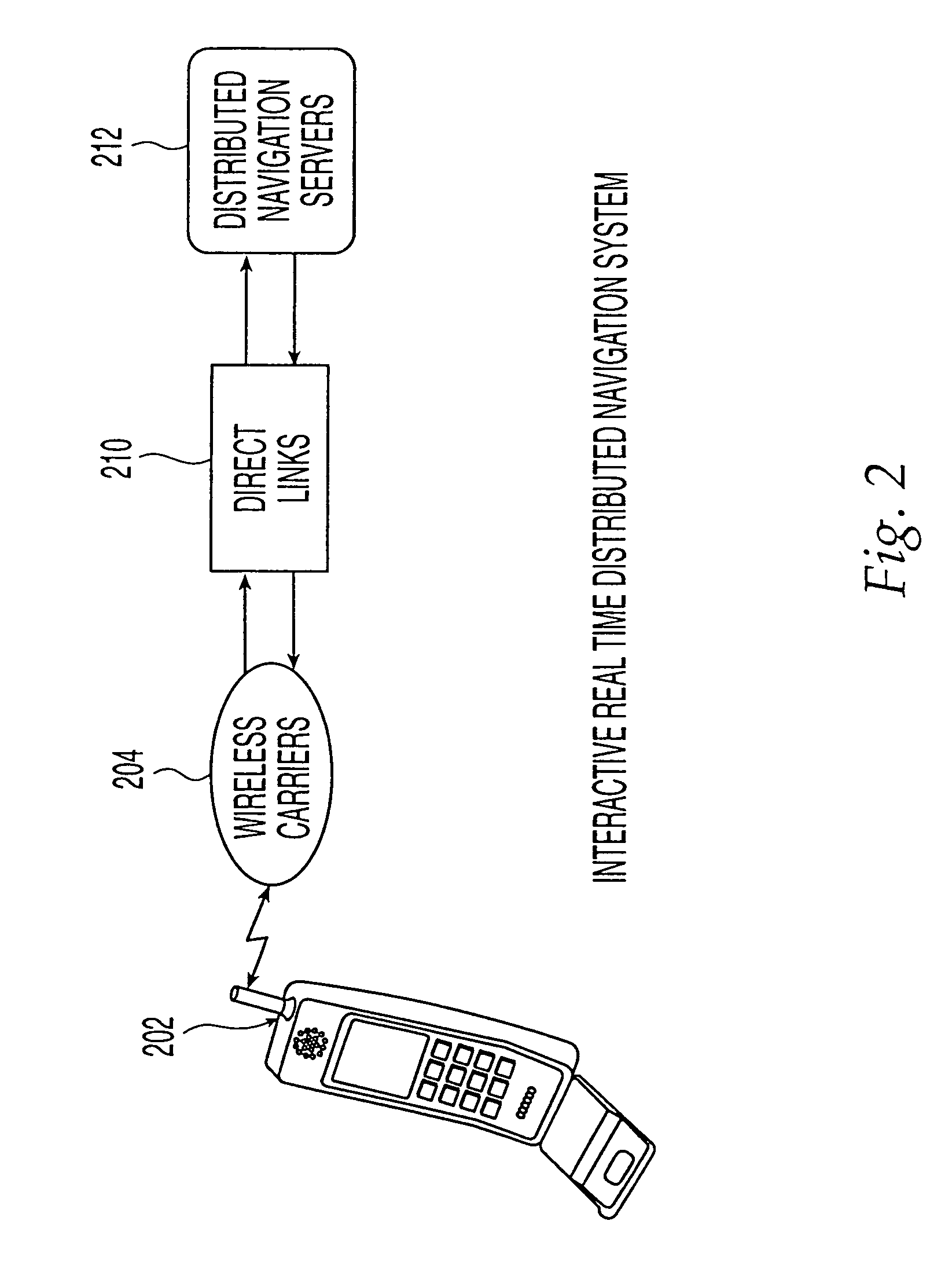Real-time navigation system for mobile environment
a real-time navigation and mobile environment technology, applied in traffic control systems, navigation instruments, instruments, etc., can solve the problems of not providing real-time directions, user confusion or update directions, and requiring special equipment in the vehicle, so as to facilitate and efficiently provide navigational directions
- Summary
- Abstract
- Description
- Claims
- Application Information
AI Technical Summary
Benefits of technology
Problems solved by technology
Method used
Image
Examples
Embodiment Construction
[0034]The present invention is directed to a method and apparatus for providing navigational information to a user connected to the system through a real-time connection, such as a wireless network.
[0035]FIG. 1 shows an architecture for an interactive real-time distributed navigation system in accordance with a preferred embodiment. The various components and their interaction will now be described. It is to be understood that where like numerals are used in different figures, such like numerals refer to the same item. Wireless device 202 may take the form of a cellular telephone, satellite telephone, wireless Personal Digital Assistant (PDA), personal computer or other suitable device having wireless communications capability. Preferably, wireless device 202 is equipped with positioning capability that takes the form of, for example, global positioning systems (GPS), emergency 911 (E911) location, or others, including those that may become available in the future. Currently, variou...
PUM
 Login to View More
Login to View More Abstract
Description
Claims
Application Information
 Login to View More
Login to View More - R&D
- Intellectual Property
- Life Sciences
- Materials
- Tech Scout
- Unparalleled Data Quality
- Higher Quality Content
- 60% Fewer Hallucinations
Browse by: Latest US Patents, China's latest patents, Technical Efficacy Thesaurus, Application Domain, Technology Topic, Popular Technical Reports.
© 2025 PatSnap. All rights reserved.Legal|Privacy policy|Modern Slavery Act Transparency Statement|Sitemap|About US| Contact US: help@patsnap.com



